The African fat-tailed gecko (Hemitheconyx caudicinctus) is one of nature’s treasures. These little reptiles have captivatingly patterned scales and distinctive plump tails. Native to West Africa, they are small to medium-sized lizards belonging to the family Eublepharidae. Interestingly, their characteristic fat tails store reserves of fat that serve as an energy source during periods of scarcity. Fat-tailed geckos are popular pets due to their manageable size, docile temperament, and interesting appearance. But did you know that these geckos come in a wide variety of colors? Continue reading to discover more about African fat-tiled gecko colors from rarest to most common.
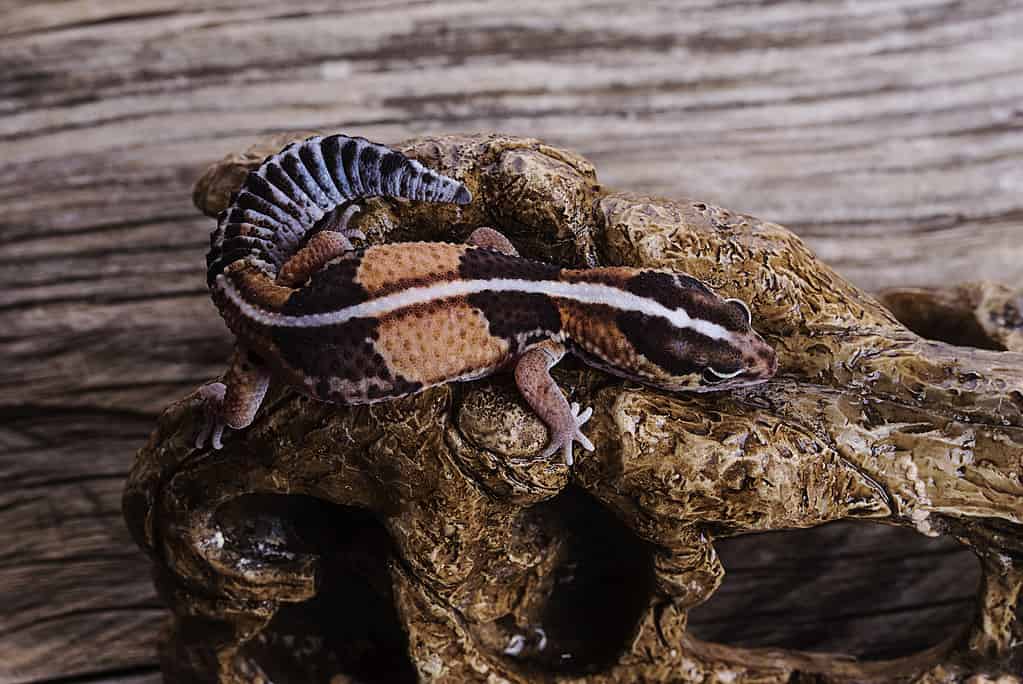
With mesmerizing scales and distinctive plump tails, African fat-tailed geckos boast a unique aesthetic.
©Kaan Sezer/iStock via Getty Images
African Fat-Tailed Gecko at a Glance
| Question | Answer |
|---|---|
| How long are African fat-tailed geckos? | African fat-tailed geckos are 8-10 inches (20-25 cm) long, including their tail. |
| How much does an African fat-tailed gecko weigh? | African fat-tailed geckos weigh between 1.5-3.0 ounces (40-80 g). |
| What is the average lifespan of an African fat-tailed Gecko? | African fat-tailed geckos live up to 18 years in the wild. They can live even longer in captivity. |
| Are African fat-tailed geckos nocturnal? | Yes, in the wild, African fat-tailed geckos are nocturnal. |
| Are African fat-tailed geckos carnivores? | Yes, African fat-tailed geckos partake in a carnivorous/insectivorous diet of small insects and invertebrates, including worms, crickets, beetles, and roaches. |
| Where do African fat-tailed geckos live? | Fat-tailed geckos are native to West Africa. They are ground dwellers. They make their homes near rivers and streams. |
| Are African fat-tailed geckos social creatures? | No, African fat-tailed geckos prefer to live alone. |
| Do African fat-tailed geckos make good pets? | Yes, African fat-tailed geckos are becoming increasingly popular pets thanks to their compact size and docile nature. |
| How much does an African fat-tailed gecko cost? | Depending on factors like age and color, an African fat-tailed lizard costs between 125.00-550.00 USD (119.00-523.00 EUR) |
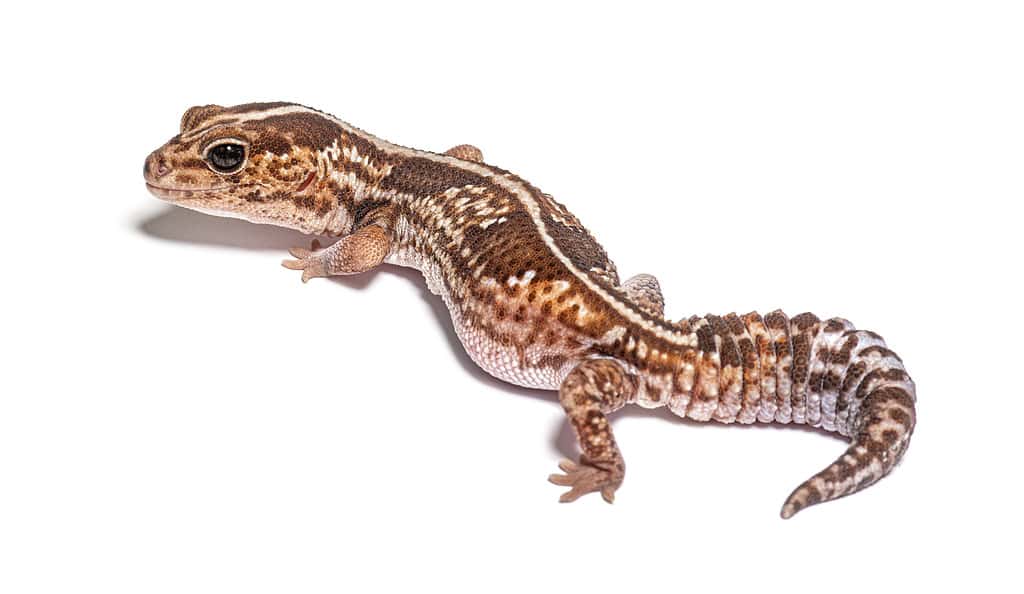
African fat-tailed geckos are becoming popular pets thanks to their compact size and docile nature.
©GlobalP/iStock via Getty Images
African Fat-Tailed Geckos Colors
African fat-tailed geckos come in a variety of colors and patterns. However, these little lizards are most commonly brown, with a variable pattern of light and dark blotches or broad bands across the upper back and tail. Additionally, patterns vary among individuals. While some color morphs are the result of natural adaptations, others are primarily the product of human selection and breeding for aesthetic purposes. These morphs can add diversity and interest to the captive population. Because some colors are rarer than others, the specific color morph affects a gecko’s price. So, when selecting a fat-tailed gecko as a pet, you should choose one that appeals to your aesthetic, while taking care not to empty your wallet.
Albino is the Rarest
Albino African fat-tailed geckos are the rarest color morph. Because albino geckos lack melanin entirely, they have a white or cream-colored body with pink or red eyes. Additionally, they often have pale or yellowish patterns. Albinism is a genetic mutation, and these geckos are bred for their appearance. In the wild, lack of pigment is a disadvantage, as it makes them more conspicuous to predators.
Hypomelanistic
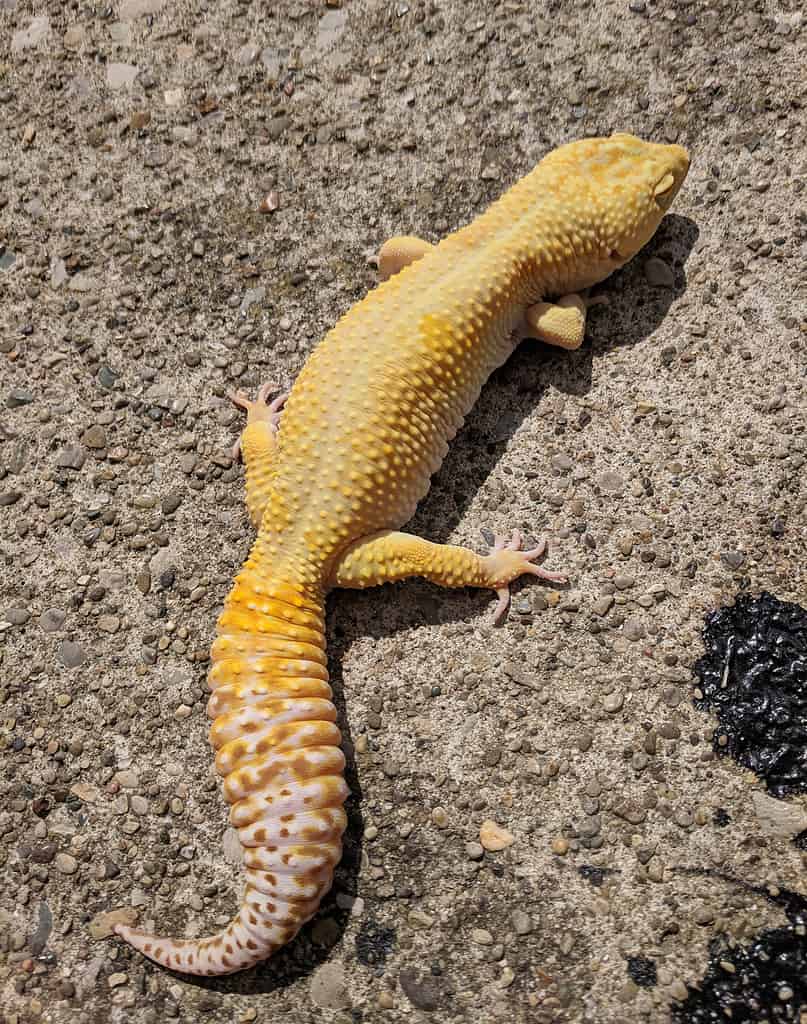
A hypomelanistic African fat-tailed gecko looks very similar to this hypomelanistic
leopard
gecko.
©Hunter Byrd/Shutterstock.com
Hypomelanistic or hypo fat-tailed geckos have lighter background colors and reduced patterning. Hypomelanism is characterized by a reduced production of melanin, the pigment responsible for dark coloration in skin, scales, and eyes. Hypomelanism can lead to a range of color variations.
Patternless
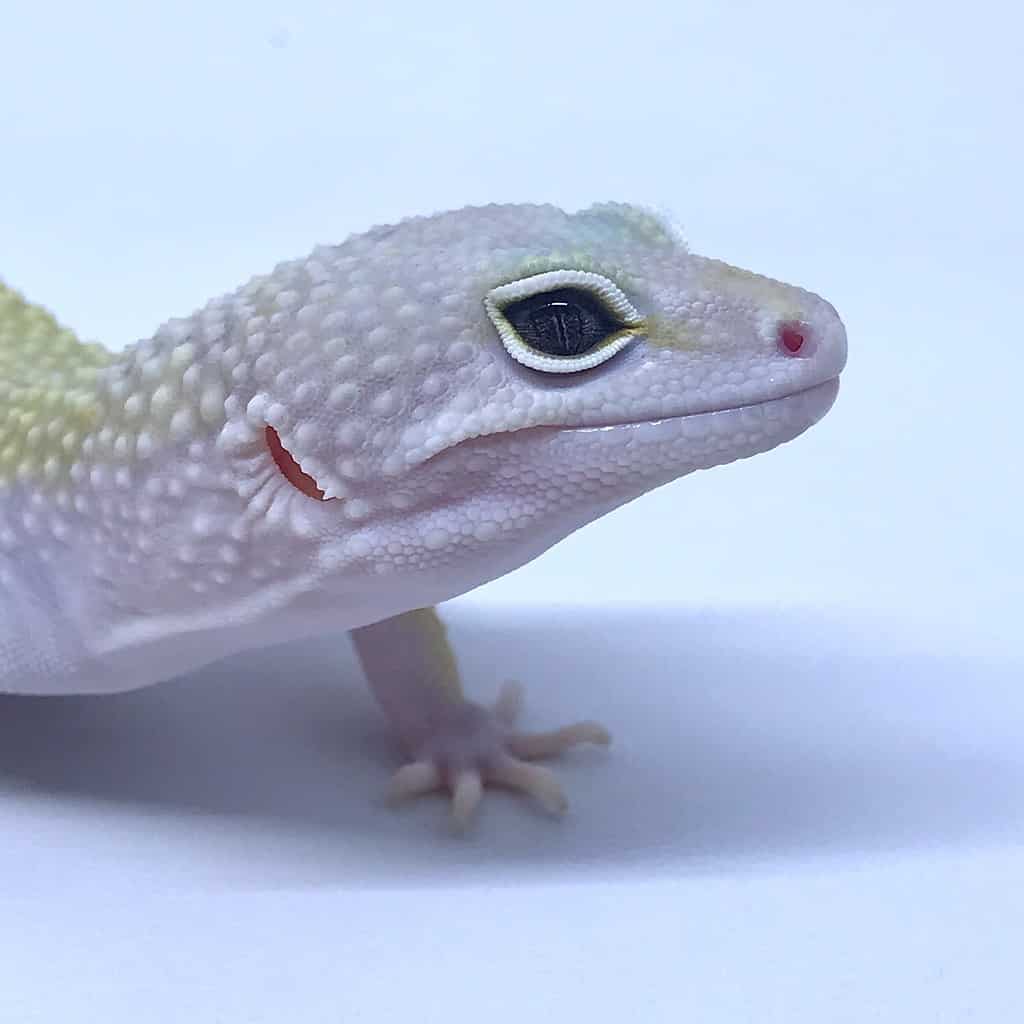
Patternless fat-tailed geckos lack distinct spots or bands on their bodies.
©Yudha Agus Wijaya/Shutterstock.com
Patternless geckos lack distinct spots or bands on their bodies, giving them a solid, uniform appearance. This morph is not commonly found in nature. They are the result of selective breeding in captivity. In the wild, fat-tailed geckos typically exhibit patterns on their bodies as a form of camouflage to help them blend into their surroundings. Reptile enthusiasts and breeders create unique and aesthetically appealing geckos for the pet trade, though these guys couldn’t survive in the wild. These variations have become popular as pets, but they are not representative of the natural coloration or patterning of the species.
Striped
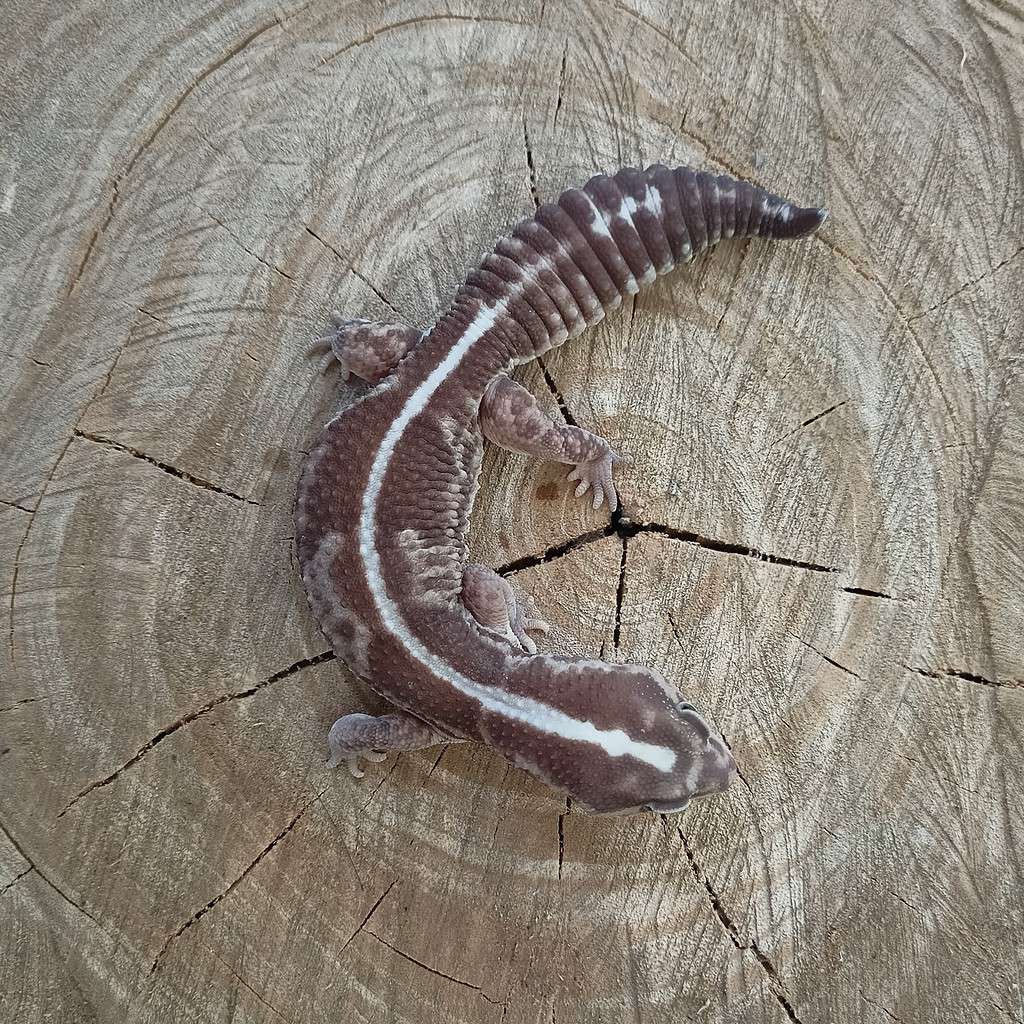
Striped fat-tailed geckos have prominent stripes running down their backs.
©BAHALWAN/Shutterstock.com
Striped fat-tailed geckos have prominent stripes running down their backs or along their bodies, which can vary in thickness and color. These stripes contrast with the background coloration, which can range from various shades of brown, gray, or orange. The stripes vary in color and thickness, creating a visually striking and attractive pattern.
Banded

Banded fat-tailed geckos have well-defined bands or rings of color across their bodies.
©Kaan Sezer/iStock via Getty Images
The banded morph features well-defined bands or rings of color that stretch across the body. Because these bands typically alternate between lighter and darker sections, they create a distinct and visually appealing pattern. The bands may vary in thickness and color intensity, giving each gecko a unique appearance. Due to their striking and eye-catching patterning, banded fat-tailed geckos are popular among reptile enthusiasts.
Tiger
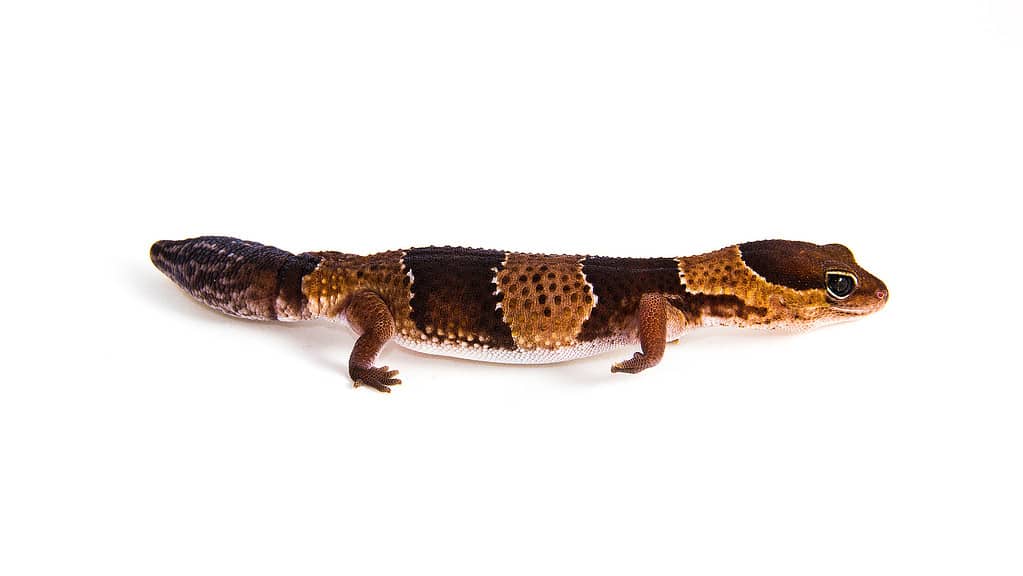
Tiger
morphs exhibit bold, dark stripes against a lighter background, resembling the markings of a tiger.
©ThomasDeco/Shutterstock.com
Bold, dark stripes or bands are characteristic of the tiger morph. These stripes and bands run down the back and sides. They are reminiscent of the markings of a tiger, hence its name. These dark stripes contrast with the lighter background coloration of the gecko, creating a distinctive appearance. Reptile enthusiasts are particularly fond of the tiger morph for its attractive patterning.
Tangerine
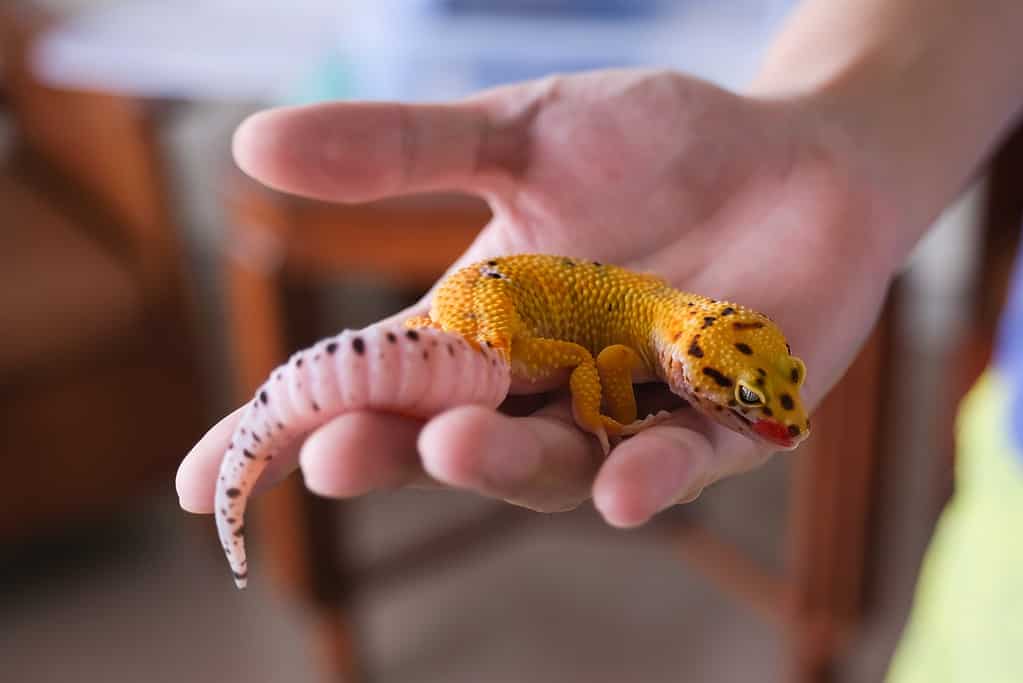
©Fresh Stocks/Shutterstock.com
Tangerine morphs have vibrant orange or tangerine-colored accents. These rich orange hues are especially prominent on their tails and sometimes extending onto their bodies. Because tangerine morphs have gorgeous coloration, many gecko lovers are drawn to them. Assuming you appreciate a bright and cheerful appearance, this may be the morph for you.
Brown

African fat-tailed geckos are commonly brown and tan.
©I Wayan Sumatika/Shutterstock.com
The brown morph has a predominantly brown coloration with various shades of brown, ranging from lighter to darker hues. This color morph lacks distinct patterns or markings, such as stripes or bands. Brown fat-tailed geckos often have a more subdued and natural appearance, which resembles the typical coloration of wild specimens.
Wild Type is the Most Common
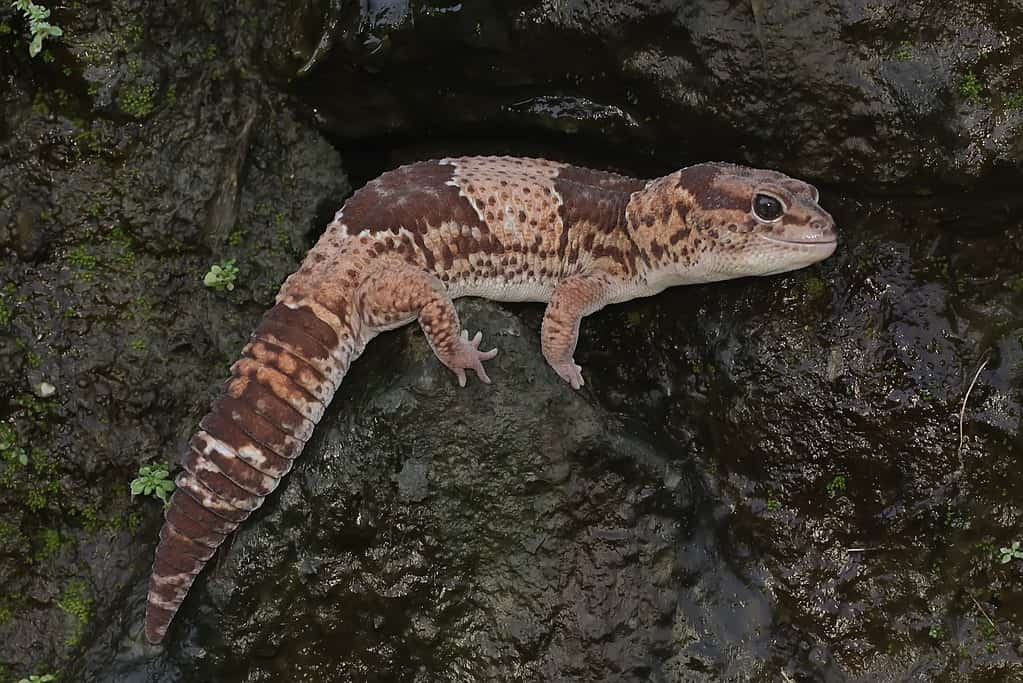
The wild type or normal coloration of African fat-tailed geckos is the most common.
©I Wayan Sumatika/Shutterstock.com
The wild type or normal coloration of African fat-tailed geckos is the most common. These colors typically include shades of brown, gray, and tan, along with various patterns of spots, stripes, or bands. These patterns are quite variable across individuals. Wild-type fat-tailed geckos have evolved to blend in with their natural surroundings in arid and semi-arid regions of West Africa. Due to their earth-tone colors, these lizards have excellent camouflage and avoid detection by predators.
Five Fun Facts about Fat-Tailed Geckos
- The fatter the tail, the healthier the gecko! In fact, a thin tail may be a sign of illness or improper diet.
- Unlike other geckos, African fat-tailed geckos have eyelids and can blink!
- African fat-tailed geckos are similar in appearance to leopard geckos. However, African fat-tails are much calmer and more laidback than their leopard cousins.
- These geckos are polyphyodonts, replacing their 100 teeth several times a year!
- African fat-tailed geckos can live 20 years or more in captivity.
The photo featured at the top of this post is © Kaan Sezer/iStock via Getty Images
Thank you for reading! Have some feedback for us? Contact the AZ Animals editorial team.






